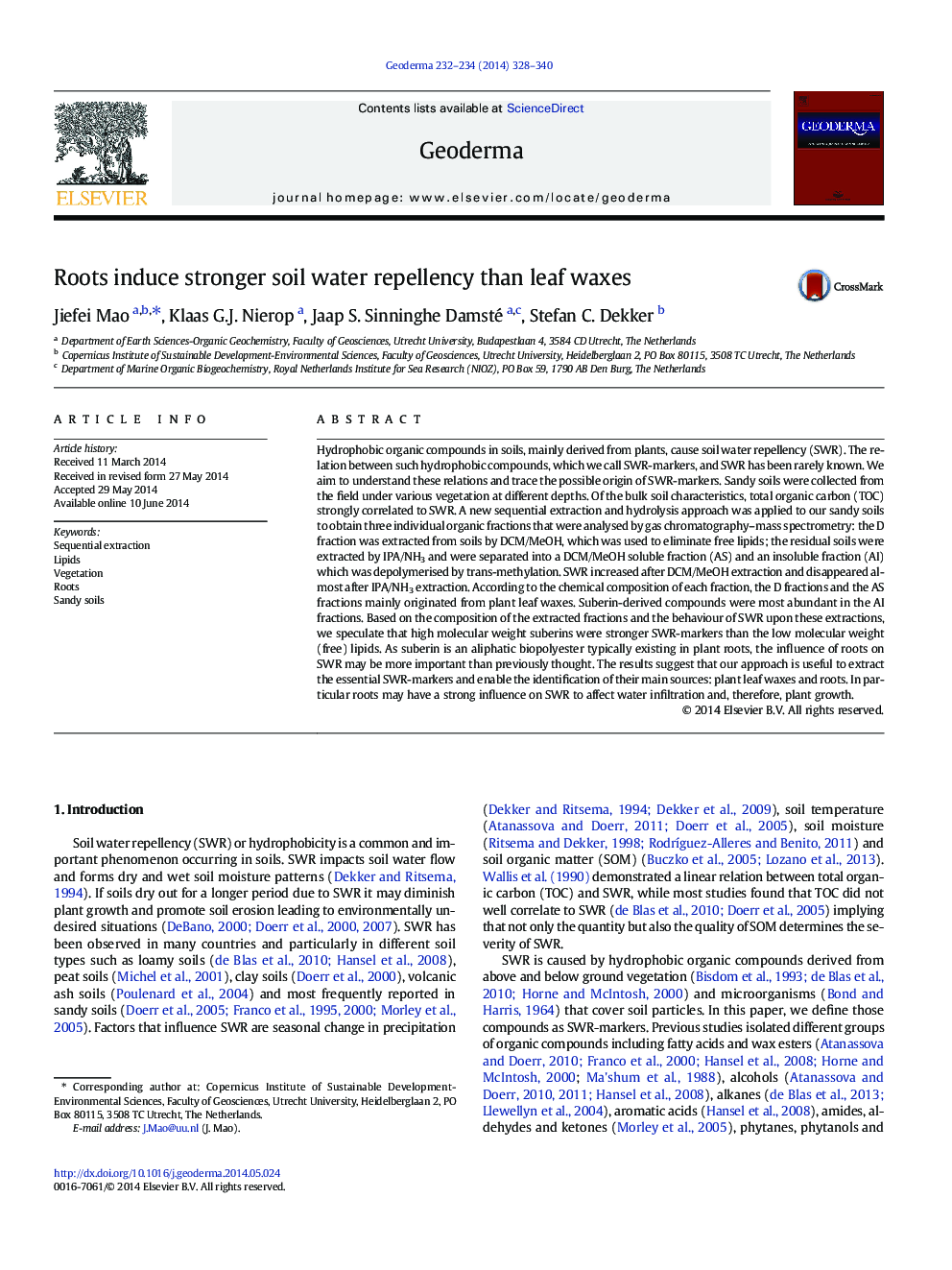| Article ID | Journal | Published Year | Pages | File Type |
|---|---|---|---|---|
| 6408740 | Geoderma | 2014 | 13 Pages |
â¢IPA/NH3 is capable of extracting organic solvent insoluble biopolyesters.â¢Part of the low molecular weight SWR-markers is protected by suberins.â¢Suberin-coated soils are more water repellent than soils coated by free lipids.
Hydrophobic organic compounds in soils, mainly derived from plants, cause soil water repellency (SWR). The relation between such hydrophobic compounds, which we call SWR-markers, and SWR has been rarely known. We aim to understand these relations and trace the possible origin of SWR-markers. Sandy soils were collected from the field under various vegetation at different depths. Of the bulk soil characteristics, total organic carbon (TOC) strongly correlated to SWR. A new sequential extraction and hydrolysis approach was applied to our sandy soils to obtain three individual organic fractions that were analysed by gas chromatography-mass spectrometry: the D fraction was extracted from soils by DCM/MeOH, which was used to eliminate free lipids; the residual soils were extracted by IPA/NH3 and were separated into a DCM/MeOH soluble fraction (AS) and an insoluble fraction (AI) which was depolymerised by trans-methylation. SWR increased after DCM/MeOH extraction and disappeared almost after IPA/NH3 extraction. According to the chemical composition of each fraction, the D fractions and the AS fractions mainly originated from plant leaf waxes. Suberin-derived compounds were most abundant in the AI fractions. Based on the composition of the extracted fractions and the behaviour of SWR upon these extractions, we speculate that high molecular weight suberins were stronger SWR-markers than the low molecular weight (free) lipids. As suberin is an aliphatic biopolyester typically existing in plant roots, the influence of roots on SWR may be more important than previously thought. The results suggest that our approach is useful to extract the essential SWR-markers and enable the identification of their main sources: plant leaf waxes and roots. In particular roots may have a strong influence on SWR to affect water infiltration and, therefore, plant growth.
